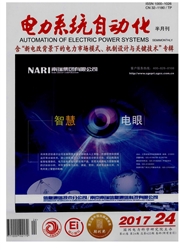

 中文摘要:
中文摘要:
归纳相继故障研究的要点与现状,包括演化机理、模式表示、场景筛选判据。建议仅在需要强调前后故障间的因果关系时使用术语“连锁故障”,否则使用内涵更广的“相继故障”来计及独立的相继故障和有共同致障源的相继故障。针对关键相继事故链的识别方法,归纳为基于概率、后果或风险的几类关注度指标,并比较了其分析方法及效果。指出对研究与应用的新挑战,特别是对小概率高风险事件的正确处理,展望研究重点与可能突破的方向。
 英文摘要:
英文摘要:
This paper summarizes the key points and state-of-the-art of researches on cascading failures, including the evolution mechanism, mode expression and scene screening criteria. It is suggested that the term "liansuo faults" with Chinese pinyin might be used only if the causality between two successive faults needs stress. Otherwise, the term "xiangji faults" with Chinese pinyin is more suitable for covering successive fauIts with independent causes or common causes. The methods for identifying key successive-fault-chains can be classified by the applied attention indices, such as the probability-based, the consequence-based and the risk hased ones. These methods and their effects are compared. This paper also points out new challenges and possible breakthroughs on the relevant researches and applications, especially for correct handling of small- probability and high risk faults.
 同期刊论文项目
同期刊论文项目
 同项目期刊论文
同项目期刊论文
 Parametric prediction on default risk of Chinese listed tourism companies by using random oversampli
Parametric prediction on default risk of Chinese listed tourism companies by using random oversampli Unconventional Emergency Intelligent Prediction and Assessment Based on GA-BP Network Model and Mult
Unconventional Emergency Intelligent Prediction and Assessment Based on GA-BP Network Model and Mult 期刊信息
期刊信息
